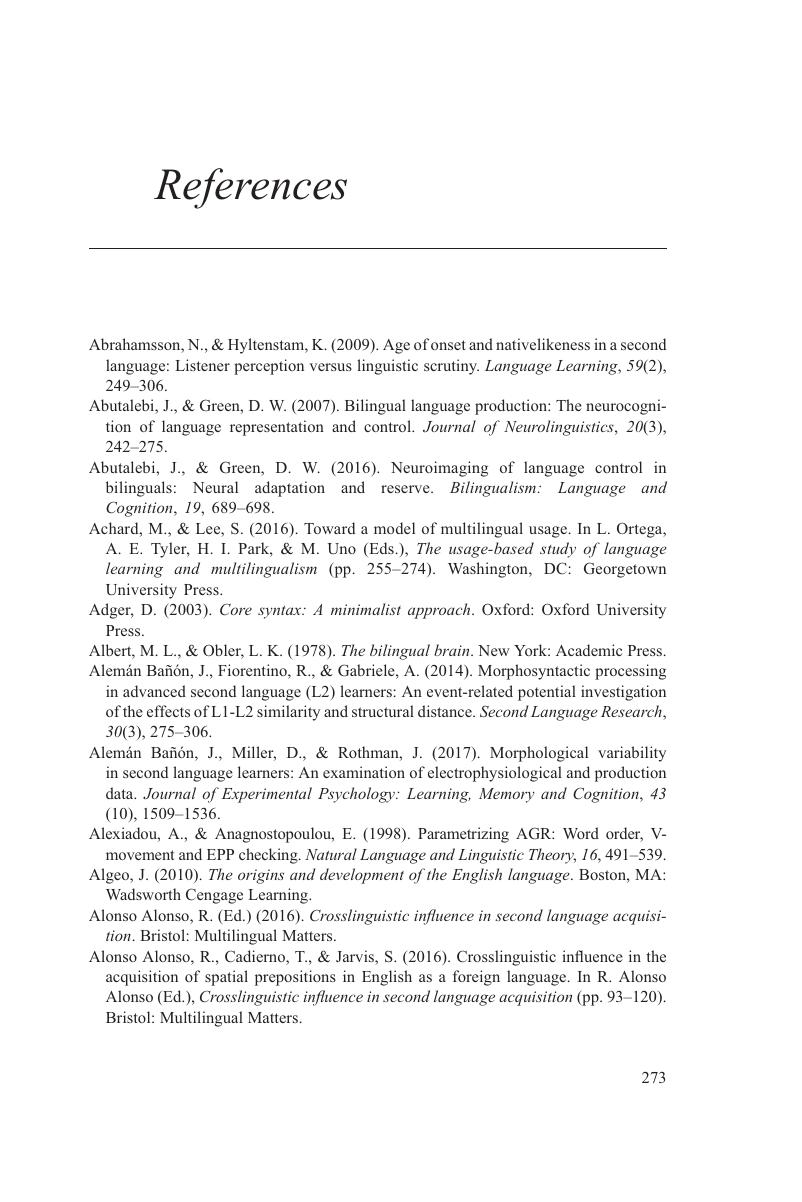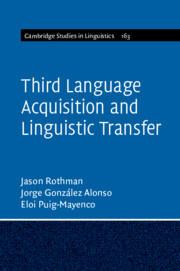Book contents
- Third Language Acquisition and Linguistic Transfer
- Cambridge Studies in Linguistics
- Third Language Acquisition and Linguistic Transfer
- Copyright page
- Dedication
- Contents
- Figures
- Tables
- Acknowledgments
- 1 Setting the Context
- 2 Theoretical Approaches to Sequential Multilingualism
- 3 Multilingual Lexis (Acquisition and Processing) and Phonology
- 4 Transfer in Multilingual Morphosyntax
- 5 A Review of Published Work
- 6 Moving On and Going Forward in L3/Ln Acquisition
- Appendix A
- Appendix B
- Appendix C
- References
- Index
- References
References
Published online by Cambridge University Press: 07 October 2019
- Third Language Acquisition and Linguistic Transfer
- Cambridge Studies in Linguistics
- Third Language Acquisition and Linguistic Transfer
- Copyright page
- Dedication
- Contents
- Figures
- Tables
- Acknowledgments
- 1 Setting the Context
- 2 Theoretical Approaches to Sequential Multilingualism
- 3 Multilingual Lexis (Acquisition and Processing) and Phonology
- 4 Transfer in Multilingual Morphosyntax
- 5 A Review of Published Work
- 6 Moving On and Going Forward in L3/Ln Acquisition
- Appendix A
- Appendix B
- Appendix C
- References
- Index
- References
Summary

- Type
- Chapter
- Information
- Third Language Acquisition and Linguistic Transfer , pp. 273 - 318Publisher: Cambridge University PressPrint publication year: 2019



